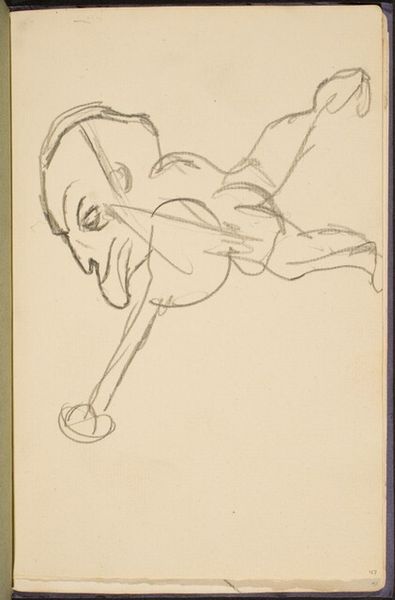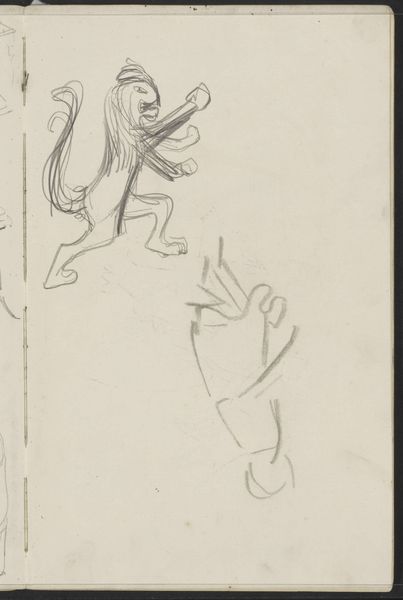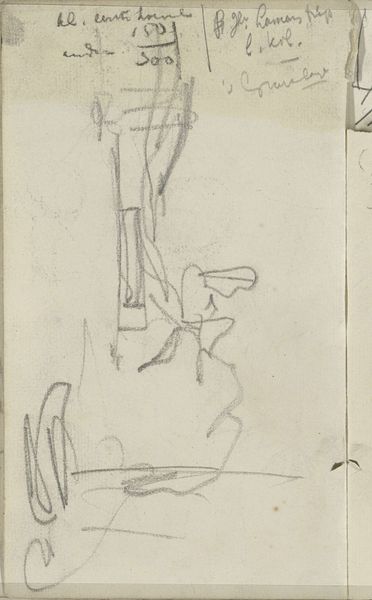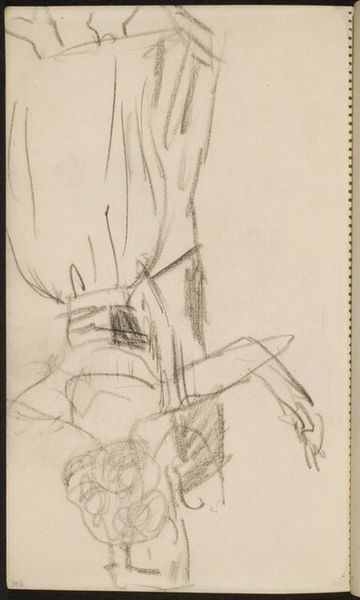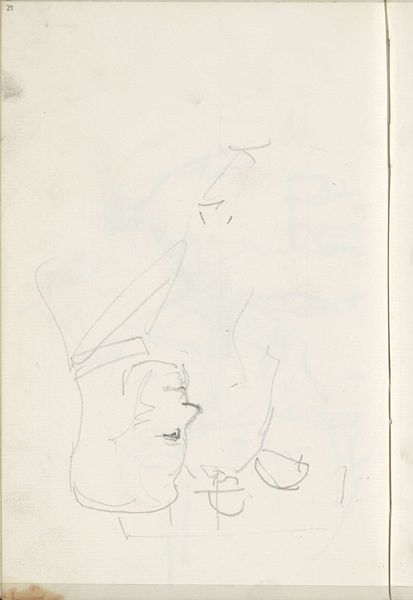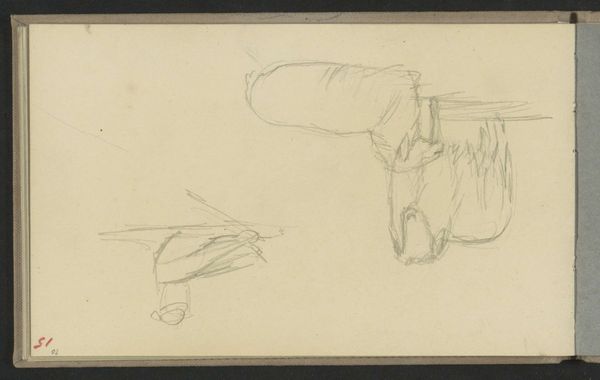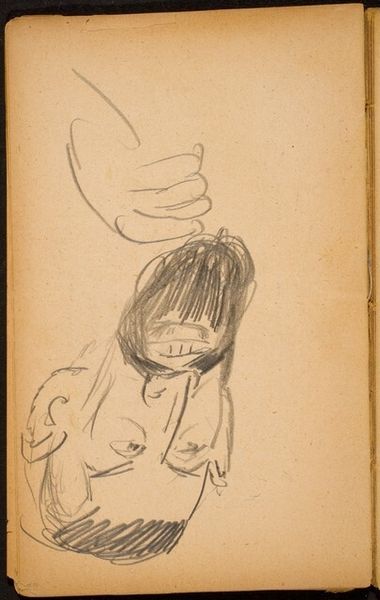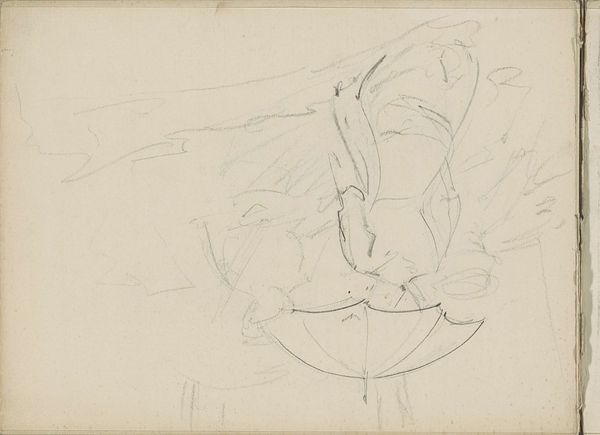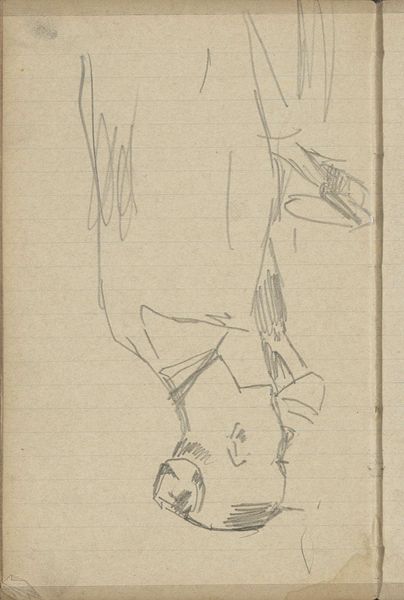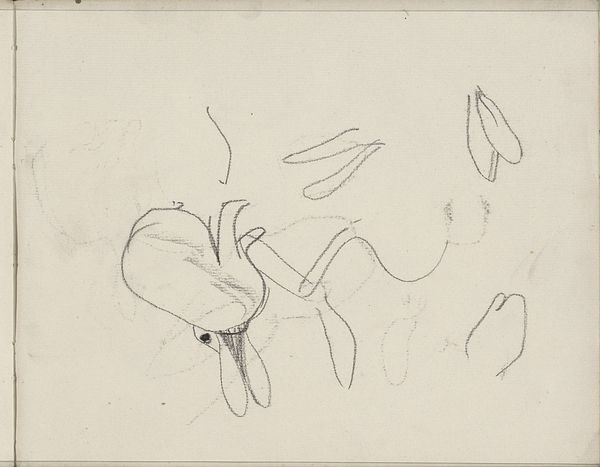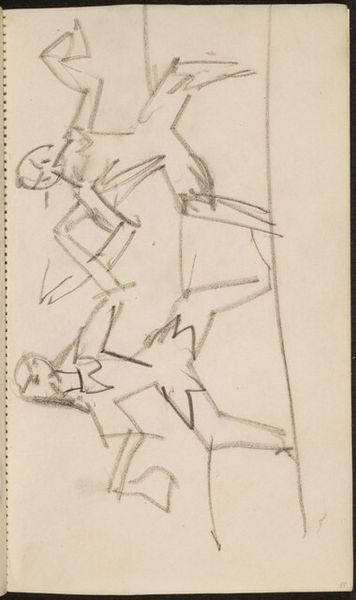![Stehende Frau in Rückenansicht (Standing Woman Seen from Behind) [p. 67] by Max Beckmann](/_next/image?url=https%3A%2F%2Fd2w8kbdekdi1gv.cloudfront.net%2FeyJidWNrZXQiOiAiYXJ0ZXJhLWltYWdlcy1idWNrZXQiLCAia2V5IjogImFydHdvcmtzLzA5YjE0MDU5LTZmNDYtNGQwYy05ZDZlLTdiMDE4MjIyYzVhZC8wOWIxNDA1OS02ZjQ2LTRkMGMtOWQ2ZS03YjAxODIyMmM1YWRfZnVsbC5qcGciLCAiZWRpdHMiOiB7InJlc2l6ZSI6IHsid2lkdGgiOiAxOTIwLCAiaGVpZ2h0IjogMTkyMCwgImZpdCI6ICJpbnNpZGUifX19&w=750&q=75)
Stehende Frau in Rückenansicht (Standing Woman Seen from Behind) [p. 67] 1927
0:00
0:00
drawing, pencil
#
portrait
#
drawing
#
german-expressionism
#
figuration
#
pencil
#
modernism
Dimensions: page size: 17 x 11.8 cm (6 11/16 x 4 5/8 in.)
Copyright: National Gallery of Art: CC0 1.0
Editor: This is "Standing Woman Seen from Behind," a pencil drawing created by Max Beckmann in 1927. It's a simple sketch, but there's a striking sense of loneliness, almost vulnerability, in the way the figure is presented. What do you see in this piece? Curator: That vulnerability is precisely what captures my attention. Consider the historical context: Germany in the late 1920s, between wars, fraught with economic hardship and social anxieties. The woman, faceless and turned away, embodies a collective sense of uncertainty. Do you notice how the simple lines, almost hesitant, create a feeling of detachment? Editor: Yes, the lines definitely contribute to that feeling of unease. It’s not a forceful or bold image, which feels intentional. Curator: Exactly. It lacks the overt drama often associated with German Expressionism. The woman's posture, while simple, hints at a burden carried, a weariness that transcends the individual. Think of the symbolic weight of depicting someone from behind—it obscures identity and invites projection. What narratives emerge for you? Editor: I imagine a woman contemplating a difficult decision, or perhaps simply exhausted by the demands of daily life in that era. I didn't consider the Expressionist context earlier, but it makes perfect sense that the facelessness is part of that visual language. Curator: And isn’t that the power of symbols? To distill complex emotions and cultural experiences into a single, resonant image. We’ve looked together at how one understated image by Beckmann, uses a simple composition and a loaded cultural context, offering layers of meaning beyond its seemingly simple surface. Editor: Definitely. Thinking about the historical period and Beckmann's focus on hidden narratives made it much easier to interpret. Thanks!
Comments
No comments
Be the first to comment and join the conversation on the ultimate creative platform.

